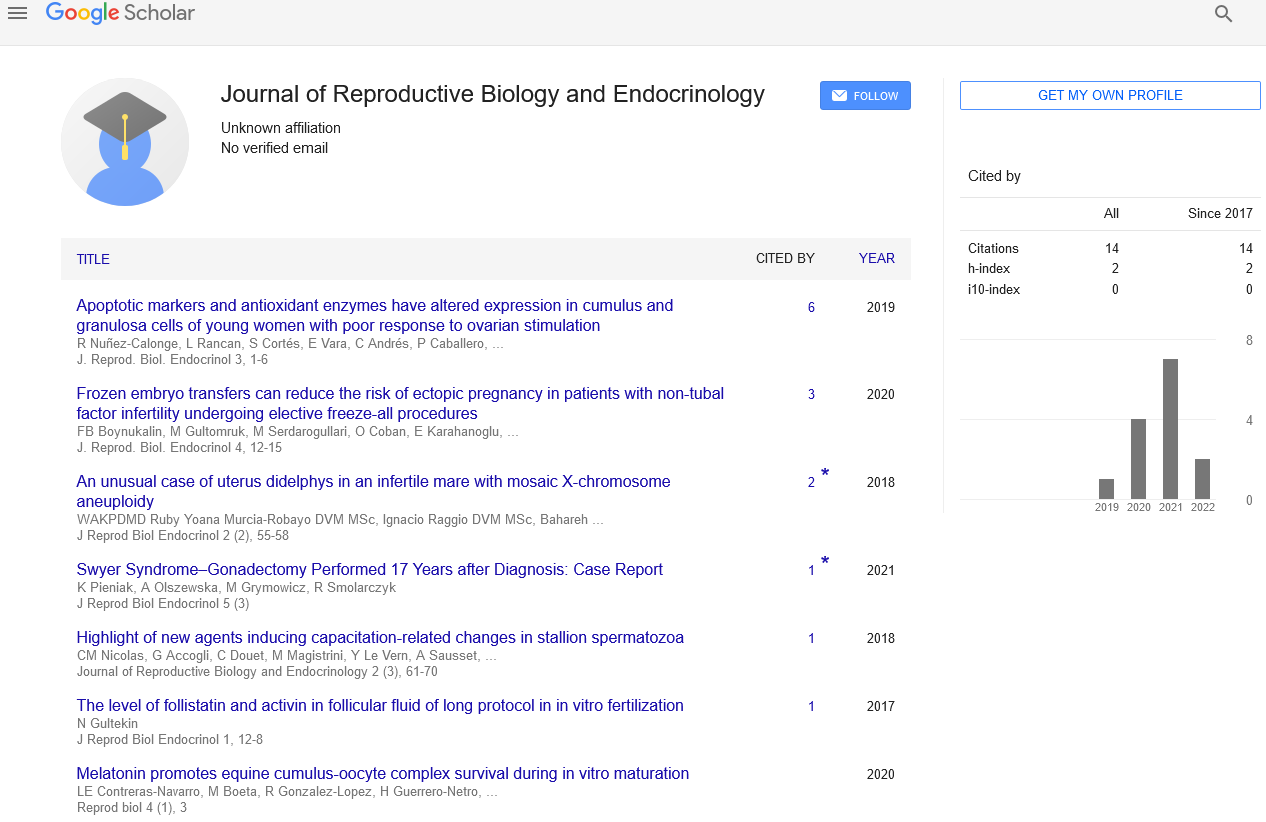Pregnancy and parturition involve neuroendocrine mechanism
Received: 03-Mar-2022, Manuscript No. PULJRBE-22-4073; Editor assigned: 05-Mar-2022, Pre QC No. PULJRBE-22-4073(PQ); Accepted Date: Mar 23, 2022; Reviewed: 17-Mar-2022 QC No. PULJRBE-22-4073(Q); Revised: 21-Mar-2022, Manuscript No. PULJRBE-22-4073(R); Published: 24-Mar-2022, DOI: 10.37532.2022.6.18-19
Citation: Brian M. Pregnancy and parturition involve neuroendocrine mechanisms. J Reprod Biol Endocrinol. 2022; 6(2):1-2.
This open-access article is distributed under the terms of the Creative Commons Attribution Non-Commercial License (CC BY-NC) (http://creativecommons.org/licenses/by-nc/4.0/), which permits reuse, distribution and reproduction of the article, provided that the original work is properly cited and the reuse is restricted to noncommercial purposes. For commercial reuse, contact reprints@pulsus.com
Abstract
Introduction
The complicated mechanisms dominant human giving birth involves mother, fetus, and placenta, and stress could be a key component activating a series of physiological adaptational responses. Preterm birth could be a clinical syndrome that shares many characteristics with term birth. a significant role for the system mechanisms has been planned, and placenta/membranes area unit sources for neuro-hormones and peptides. Pitocin (OT) is that the hormone whose major target is female internal reproductive organ ability and placenta represents a unique supply that contributes to the mechanisms of giving birth. The CRH/urocortin (Ucn) family is another necessary system pathway concerned in term and preterm birth. The CRH/Ucn family consists of 4 ligands: CRH, Ucn, Ucn2, and Ucn3. These peptides have a pleyotropic operate and area unit expressed by human placenta and vertebrate membranes. Female internal reproductive organ ability, vessel tone, and immune operate area unit influenced by CRH/Ucns throughout gestation and bear major changes at giving birth. Among the others, neurohormones, relaxin, endocrine gland hormone-related supermolecule, opioids, neurosteroids, and monoamines area unit expressed and secreted from placental tissues at giving birth. Preterm birth is that the consequence of a premature and sustained activation of endocrine and immune responses. A preterm birth proof for a premature activation of OT secretion moreover as enlarged maternal plasma CRH levels suggests an infective role of those neurohormones [1].
The mechanisms concerned in human gestation maintenance and giving birth area unit extremely complicated and involve mother, foetus and placenta. The "final common pathway" to delivery consists by inflammatory and endocrine interactive ways that tip the balance in favor of coordinated female internal reproductive organ ability and cervical dilation. These mechanisms involve a shift from progestogen to sex hormone dominance, CRH action, enlarged sensitivity to Pitocin, gap junction formation, and enlarged prostaglandins activity. Complementary changes within the cervix involve a decrease in progestogen dominance and therefore the actions of prostaglandins and internal secretion, via animal tissue alterations, resulting in cervical softening and dilation [2].
The cervix is a protecting barrier from incursive microorganisms and as a structural barrier to delivery of the foetus. Among all biological processes, the outstanding animal tissue reworking that happens within the cervix throughout and once giving birth is alone in scope and magnitude. The method of animal tissue reworking within the cervix throughout gestation happens in four stages: softening, ripening, dilation, and repair. though overlapping in time, every stage is unambiguously regulated. Results from studies exploitation serial measurements of cervical length indicate that cervical ripening precedes myometrial contractions of labor by many weeks, suggesting that giving birth|biological method} in girls could be a process of long period which female internal reproductive organ contractions of labor area unit late events within the giving birth process [3].
During gestation, the maternal brain drives a series of adaptational mechanisms that area unit basic for permitting vertebrate growth and development, protective each mother and foetus from adverse programming and temporal order of giving birth. This system construct is even additional complicated as vertebrate brain and placenta conjointly participate as regulators of maternal-placental-fetal physiology. The placenta is currently seen as a system organ, acting as a supply of many neuroactive factors which will exert their biological effects either domestically or by coming into maternal and foetal circulation, therefore acting in AN autocrine, paracrine, and endocrine manner. a range of neural structure neurohormones (GnRH, GHRH, somatostatin, CRH, oxytocin) area unit expressed within the placenta. once stress happens throughout gestation, the maternal, fetal, and placental hypothalamic-pituitary-adrenal (HPA) axes area unit activated to stimulate a series of responses contributive to keep up physical conditions whereas at identical time avoiding the adverse effects of stress on the mother and offspring [4].
REFERENCES
- Petraglia F, Imperatore A, Challis JR. Neuroendocrine mechanisms in pregnancy and parturition. Endocri Revie. 2010;31(6):783-816.
Google Scholar Crossref - Vannuccini S, Bocchi C, Severi FM et al. Endocrinology of human parturition. In Annal d'endocrinol. 2016;77(2): 105-113.
Google Scholar Crossref - Word RA, Li XH, Hnat M et al. Dynamics of cervical remodeling during pregnancy and parturition: mechanisms and current concepts. In Semin Reprod Med. 2007; 25(1) :69-79.
Google Scholar Crossref - Voltolini C, Petraglia F. Neuroendocrinology of pregnancy and parturition. Handb Clin Neurol. 2014;124:17-36.
Google Scholar Crossref





